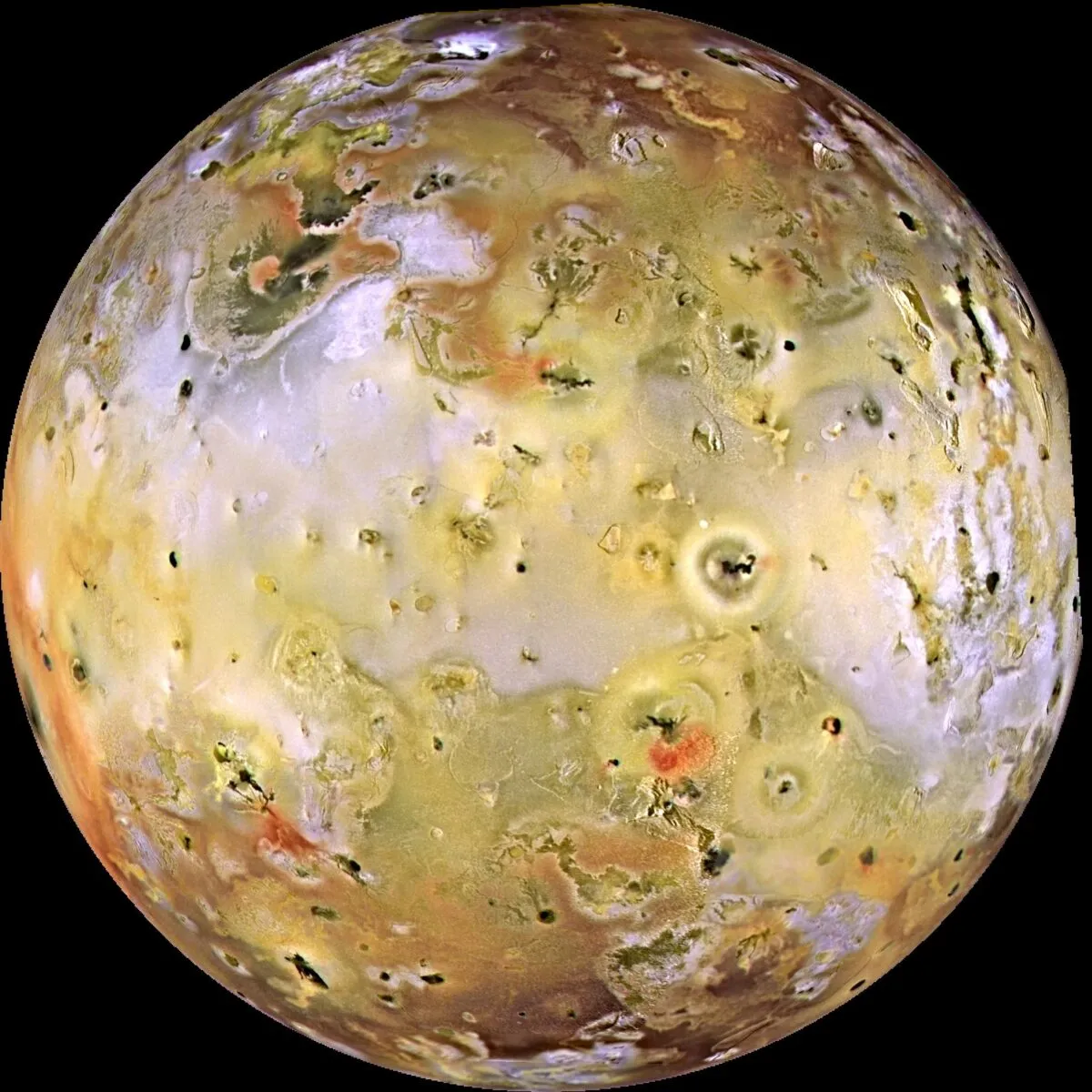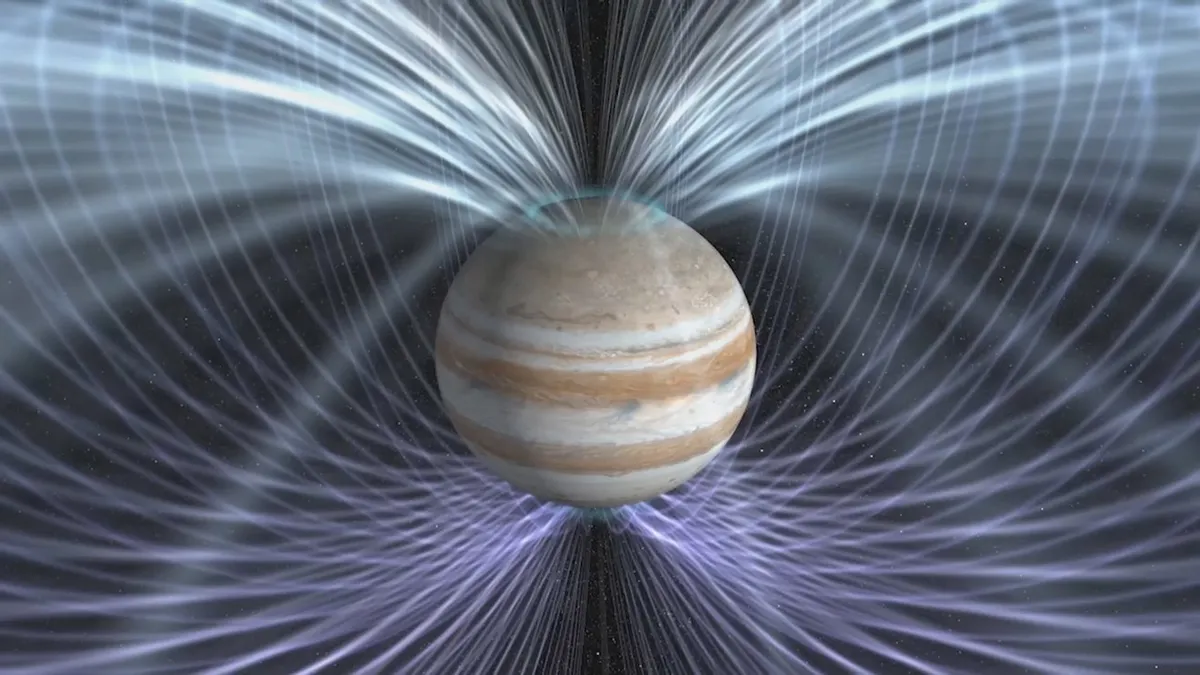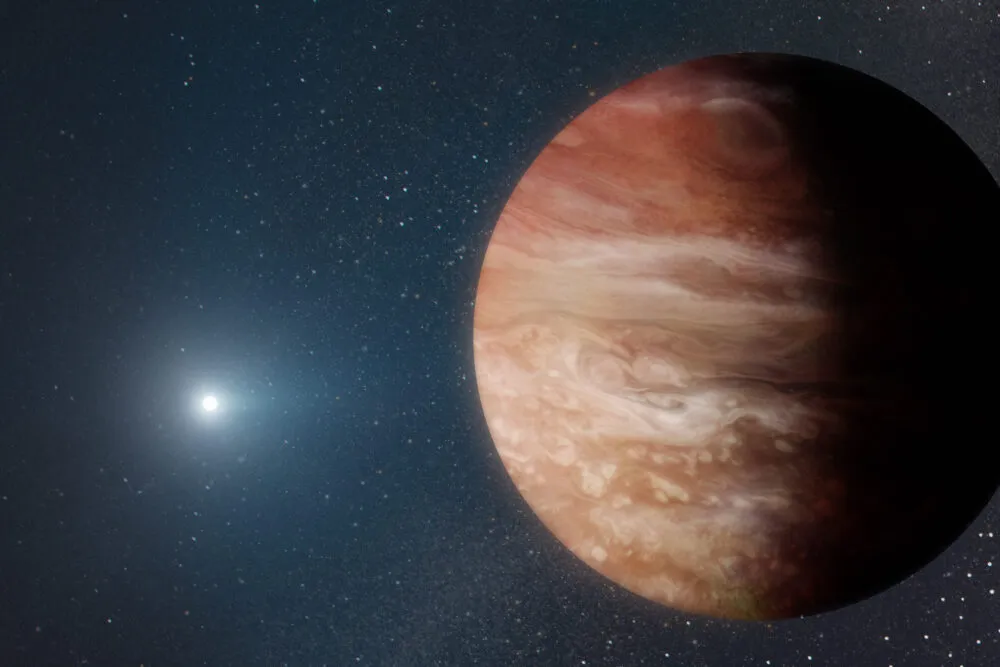Exoplanet hunters have a number of different ways of detecting worlds around other stars in the Galaxy.
This includes observing how the star is tugged around slightly by the orbiting planet’s gravity (known as 'radial velocity').
Or observing its starlight being partially blocked by a transiting exoplanet (known as the 'transit method').
But how else might astronomers be able to indirectly infer the existence of an unseen planet around a star?
Using Jupiter and Io

One idea that’s been floating around for a little while now is the possibility of detecting exoplanets by the radio waves emitted through magnetic interaction between the star and planet.
The underlying process is well known for Jupiter and its moon Io.
As Io orbits around Jupiter and through its powerful magnetic field, charged particles from the moon are swept towards the planet in what’s known as an Alfvén wave
This in turn accelerates a stream of electrons that emit a cone of radio waves.
Astronomers propose that the same physical process could be used to detect planets close-in around their star.
Small, red M-dwarfs would be excellent candidates to check because such stars generally possess strong magnetic fields.

Putting it into practice
Encouragingly, a number of M-dwarfs have been discovered to give off bright radio emissions characteristic of what would be expected from magnetic star–planet interactions – although other mechanisms have not yet been ruled out – but none of the stars harbours any known close-in planets.
The trick for such a planet-hunting method is that the radio waves are emitted in a beam that sweeps through space as the planet orbits.
So you’d need to be listening with a radio telescope at the right moment to pick up the emission.
For Io and Jupiter, within the plane of our own Solar System, the orbital, rotational and magnetic axes are all lined up with each other, and perpendicular to our line of sight from Earth.
This neat configuration means that we detect a burst of radio emission when Io is at an orbital phase of 0.25 and 0.75.
That is, when the moon is moving directly towards or away from us in its orbit around Jupiter, so that the cones of radio emissions are angled towards Earth.
But for exoplanetary systems, the orbital, rotational and magnetic axes within the star–planet system are not likely to be so conveniently aligned.

Which exoplanets?
Robert Kavanagh and Harish Vedantham at the Netherlands Institute for Radio Astronomy have been investigating when such radio emissions are most likely to be detectable, and what would be the best survey strategy to pick them up from different planetary systems.
Their computer modelling indicates the easiest planetary systems to detect using this radio method are those orientated nearly face-on to Earth.
This is useful because many of the other planet-detecting techniques, such as transit or radial velocity, are most sensitive to planetary systems lying edge-on to our line of sight.
In fact, as Kavanagh and Vedantham point out, this could be the very reason why no close-in planets have yet been discovered around any of the M-dwarfs found to be producing the suggestive radio emissions.
Lewis Dartnell was reading Hunting for Exoplanets via Magnetic Star–Planet Interactions: Geometrical Considerations for Radio Emission by Robert D Kavanagh and Harish K Vedantham Read it online at: arxiv.org/abs/2307.02555
